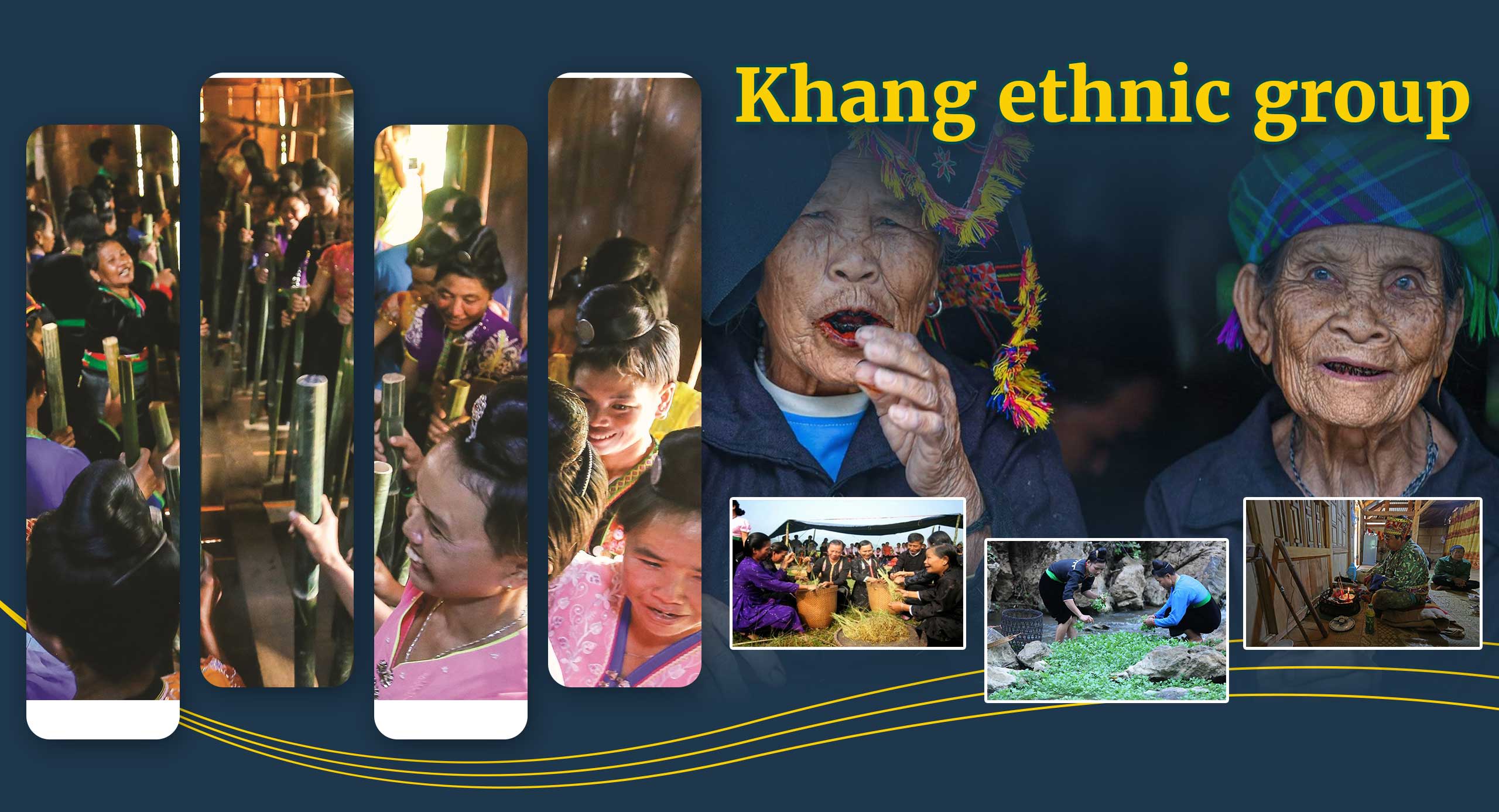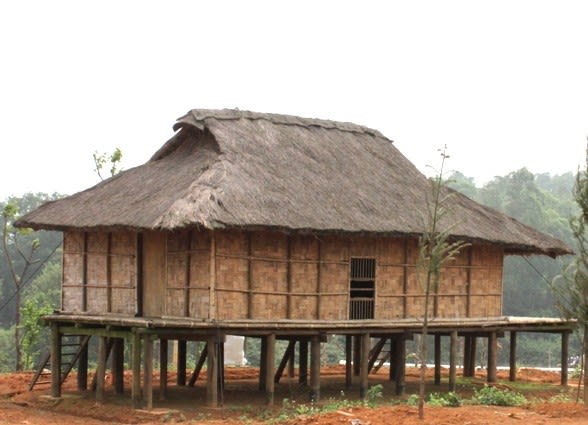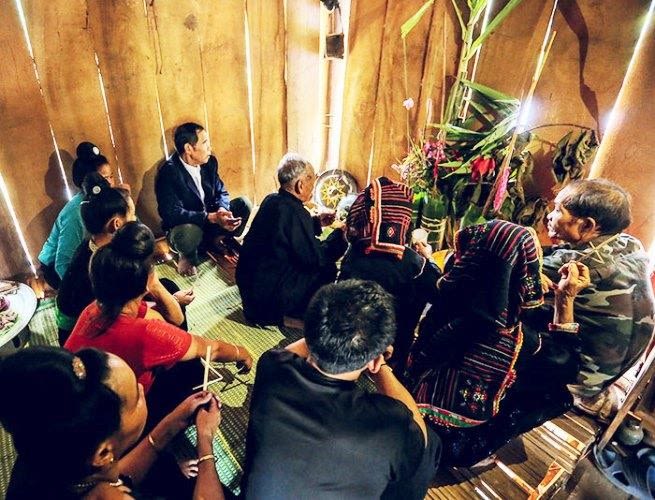
The Khang people primarily inhabit Son La, Lai Chau and Dien Bien, with many unique cultural characteristics.
Khang ethnic group
1. Origin
Historical and ethnological documents suggest that the Khang people are native inhabitants of Vietnam’s Northwest region, before the region was populated by Thai people migrating from southern China and Kho Mu people migrating from Laos.
Other names: Xa Khao, Xa Xua, Xa Don, Khang Huoc, Mkhang Hoc, Mkhang Ai, Ma-hang Beng, and Ma-hang Coi.
2. Population
According to a survey of 53 ethnic minority groups in 2019, the Khang ethnic group has a population of 16,180, including 8,170 men and 8,010 women. The average number of people in a household is 4.5, and 98.8% of the population live in rural areas.
3. Distribution
The Khang people mainly live in Son La, Dien Bien and Lai Chau.
4. Language
The Khang language belongs to the Mon-Khmer group, which is part of the Austroasiatic family. The dual use of the Khang and Thai languages is relatively common.
The Khang language is mainly spoken among family members, especially the elders, in the Khang ethnic group. However, they switch to Thai when they interact with other ethnic groups in their vicinity, such as the Thai, H’mong and Khmu. Thai is also the language of choice for religious rituals and folk cultural activities. The younger generation of the Khang people can also speak Vietnamese fluently.
Education: According to a survey of 53 ethnic minority groups in 2019, the rate of literacy among those aged 15 and above is 60.8%, the primary school attendance rate is 98.1%, the secondary school attendance rate is 86.5%, and the high school attendance rate is 30.4%. The rate of children not attending school is 20%.
5. Main characteristics
- Food: Glutinous rice and sour dishes are the favourite foods of the Khang people. They have a distinctive tradition of drinking alcohol through their noses. They also enjoy smoking cigarettes and Aztec tobacco.
- Costumes: The costumes of the Khang people are similar to those of the Thais.

A traditional house of the Khang ethnic group. (Photo: Son La Information Portal)
A traditional house of the Khang ethnic group. (Photo: Son La Information Portal)
- Housing: The Khang people live in either makeshift or permanent stilt houses. The houses have one or two roofs without gables, and the main gate spans from one end to the other, connecting to the staircase.
- Social relationships: The Khang people used to be under the authority of Thai leaders, and they lacked their own social organisation. The Khang society is mainly patriarchal, but with some traces of a matriarchal system.
- Marriage: Marriage in Khang society is both liberal and complicated. After four to five days of sleeping at the home of the girl, if the couple agrees to marry, then they must undergo a myriad of procedures. Only after living with the bride’s family for three years can the groom take his wife to his home in what is considered the most important ceremony.
- Funeral: The Khang people have a tradition of burying the dead with their daily items. After burying the dead, the funeral attendees must have a pinch of their hair cut and put into a bowl of water with eggs and dried fish. The bowl is then discarded by the roadside or the graveyard such that the spirit of the deceased does not come back and bother their kin.

A thanksgiving ritual of the Khang people. (Photo: Dien Bien Information Portal)
A thanksgiving ritual of the Khang people. (Photo: Dien Bien Information Portal)
- Worship: According to the Khang people’s belief, a person has five souls: one in the head and four in the limbs. When a person passes away, their head soul becomes a benevolent ghost that blesses their relatives, while the other four become malevolent ghosts that often pester for food. They also believe in different kinds of ghosts, such as the stream ghosts and the village ghosts. They make offerings to their deceased parents every three years. They also invite their fellow villagers to their home for a feast and a night of dancing.
- Festivals: The Khang people celebrate the Lunar New Year, the new rice festivals and other festivals related to farming.
- Economic conditions: The Khang people mainly practice slash-and-burn agriculture. They also raise animals such as pigs, chickens, ducks, water buffalo and cows. They have a skill in making housewares, especially boats, which are popular among other ethnic groups nearby. In recent years, they have engaged in forestry after receiving forest land from the State.
The unemployment rate among the Khang is 1.03%. The rate of skilled workers is 3.5%. The proportion of non-farming workers is 10.1%. The poverty rate is 51.5%.